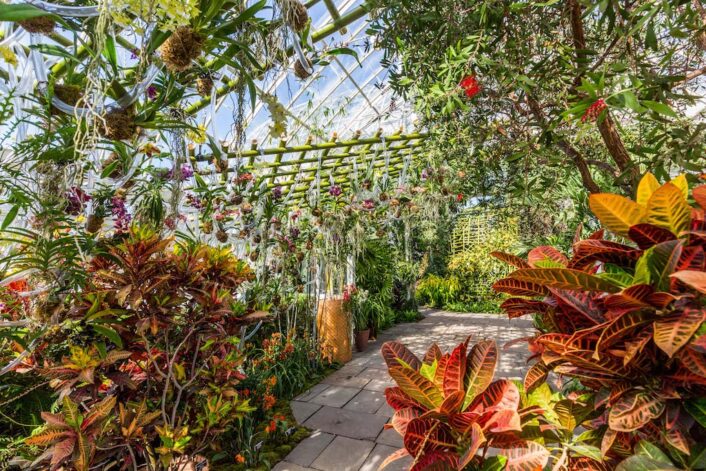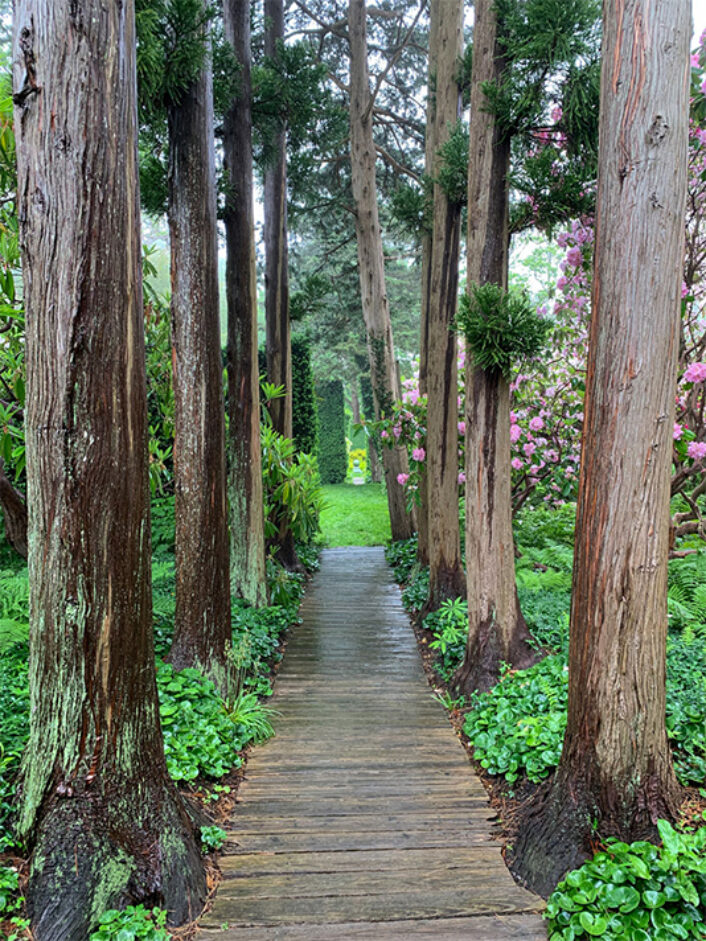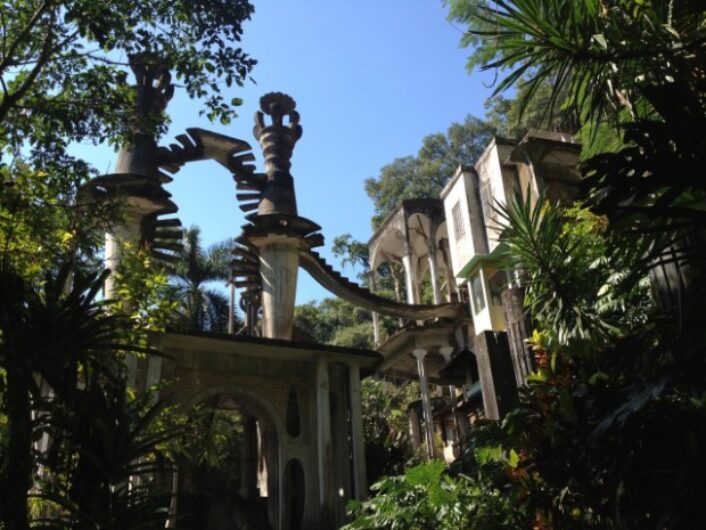Architecture
Las Pozas’ magic
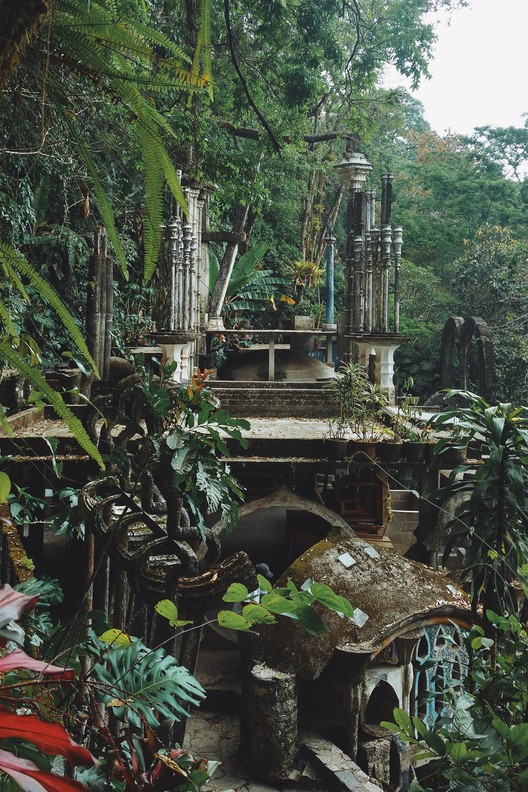
Las Pozas is an extraordinary sculpture garden that was created by Edward James.
Image courtesy of: Arch Daily, photographed by: Victor Delaqua
A virtual secret, Las Pozas in the Huasteca region of south San Luis Potosi in Mexico, and Monkton House on the West Dean Estate in Chilgrove, West Sussex are both a wonderful ode to Surrealism and specifically, Salvador Dali. The sculpture garden in Mexico dates back to 1947 when the owner was living in a self-imposed exile on a coffee plantation he purchased near Xilithla.
Created by the eccentric English poet Edward James; the West Dean Estate became his property at the young age of 25. The youngest of five children and only son, James was the main benefactor of his father’s wealth… William Dodge James was connected to the American copper mining and railroad industries; he married Evelyn Forbes, a close friend of the Prince of Wales. It seemed as though with a king as his godfather and an education at England’s most elite universities, James’ life would not veer too far from his “silver spoon upbringing. However James married Tilly Losch, an Austrian dancer, and moved to Paris where he began to run in the same circles as Paris’ avant-garde community that included André Breton and Salvador Dalí.
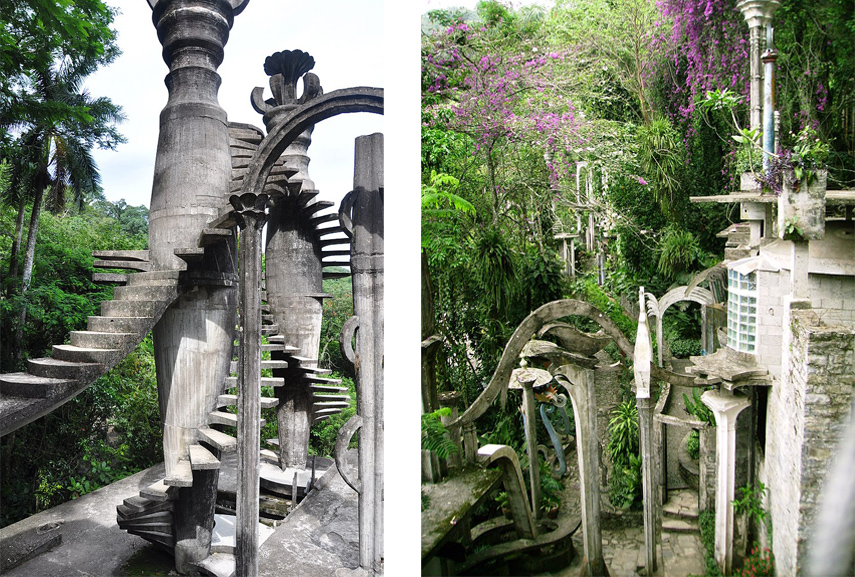
Images of Las Pozas… construction took two years. For the first twenty years after it opened, James focused mainly on horticulture.
Images courtesy of: Widewalls, photographed by: Bernardo Bolaños and Pavel Kirillov
Wanting to escape Europe, he found the untamed lands of Mexico via a number of West Coast visionaries who insisted that the plant and animal lover would feel instantly at home amongst the lush vegetation of the jungles. James traveled the country along with his “secretary” Plutarco Gastélum, a young Mexican of indigenous heritage. The search was on for a piece of land where James would be able to harvest his green thumb and surround himself with tropical, exotic animals.
James found Las Pozas in 1947; the compound that consisted of (courtesy of Mexico News Daily), “acres of structures with various levels of utility, creativity, termination, and dilapidation.” The pristine location was a jungle of sorts, lush due to the natural pools that were continuously fed by waterfalls.
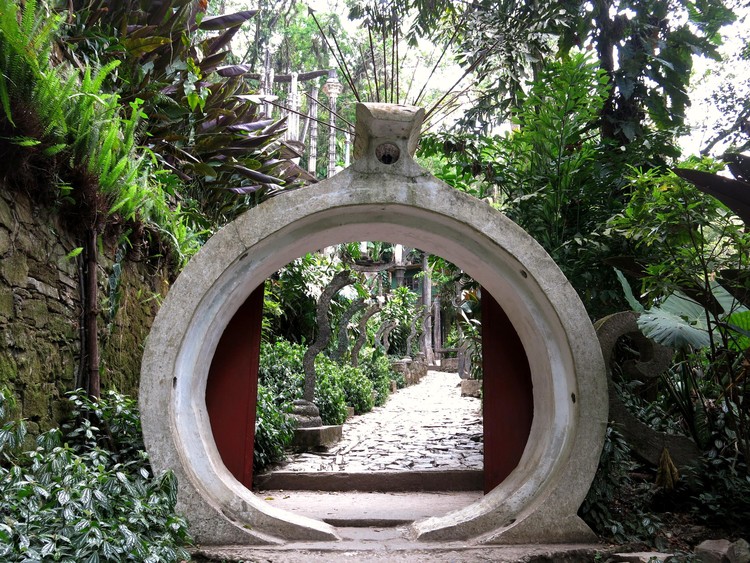
Construction provided a source of employment for the locals. In all, 150 people including gardeners, carpenters, and bricklayers were employed to create the magic.
Image courtesy of: Arch Daily, photographed by: Victor Delaqua
Sadly, the rare snow blizzard of 1962 destroyed James’ beloved orchid collection; all of the 29,000 orchids were frozen. This caused James to reverse course and he began sketching out what would turn into a perpetual garden filled with concrete structures that resembled various floral elements. Gasteum, James’ righthand man, along with local craftspeople turned the design that was based upon Surrealist principles into fruition.
The concrete structures all had unusual titles; for example, “The House on Three Floors Which Will in Fact Have Five or Four or Six.” Each formation is accompanied by rows of tropical plants and beds that keep the wild animals away from the flora and exotic birds. The majority of the buildings are tower-like structures or walkways, stairs, and bridges that connect everything together. James noted that some sculpture were inspired by plant and tree forms, while others feel most similar to the convoluted forms found in Surrealist artwork.
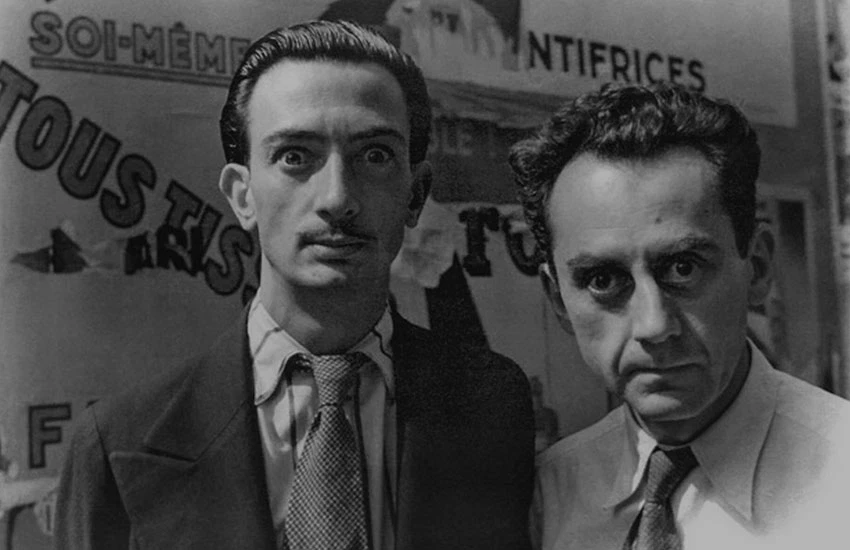
James (right) and his good friend Salvador Dalí.
Salvador Dalí was reported as telling Sigmund Freud (courtesy of Mexico News Daily), “Edward James is crazier than all the surrealists put together. They pretend, but he is the real thing.”
Image courtesy of: Mexico News Daily
James invested more than $5 million in his garden’s construction… at one point, he even sold his collection of Surrealistic art to pay for the projects mounting expenditures. When James suddenly died, Gastelum’s family took over but sadly, they did not have the funds to cover the continuous expenses. They were forced to release the animals into the rainforest, the cultivated plants died, and the sculptures were soon trampled by overgrown vegetation. By the time James died, he had built 36 Surrealist-inspired concrete sculptures that spread out over twenty acres in the jungle.
Over time, Las Pozas became a “lost city” that was rumored to have been erected by an ancient civilization. As the structures became a part of the natural surroundings, the mystery around the unusual garden grew. Luckily, in 2007 the government of San San Luis Potosí joined by the Fundación Pedro y Elena Hernández and the company Cemex decided to invest in the extraordinary yet neglected sculpture garden. Fondo Xilitla was founded and, as a legitimate foundation, it is in charge of the preservation and restoration of Las Pozas.

About Monkton House, architectural historian Clive Asle said, “It was the best interior of its period in this country to have survived. So many people did imaginative things in the 1930s, but there is nothing left in England to compare to Monkton.” Unfortuntately, even Monkton is now gone.
Image courtesy of: Ellie & Co
Just a zany, and prior to Las Pozas, James’ Monkton House was transformed (courtesy of Ellie and Co) “in the 1930s to reflect his empathy with the visionary world of the surrealists.” With creative input from his good friend Dalí, James painted the house purple and the front door was painted pink. The pillars were redesigned to mimic fiberglass palm trees, the drainpipes were made to look like sticks of bamboo, the windowsills and drapes were constructed from plaster, and three exterior chimney stacks were constructed in irregular shapes.
The interior was completely bizarre… surrealist art and artifacts filled the space and the inside was “redecorated in a mixture of styles that both reflected and defied the taste of the period.” When James became too disillusioned by the stuffy British lifestyle, he turned the property into the Edward James Foundation in order to preserve and teach craft skills. James was worried that useful and necessary skills would be lost after the war ended. Eventually, the house was transformed into West Dean College.
